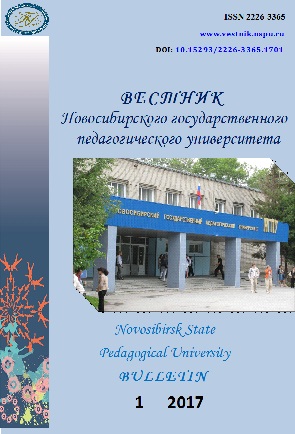Особенности структуры идентичности с городом молодежи Российских городов
Russian young city-dwellers: structural features of urban identity
Author(s): Olga Ivanovna Muravyova, Svetlana Alekseevna Litvina, Olga Kruzhkova, Sergey Aleksandrovich BogomazSubject(s): Social development, Rural and urban sociology
Published by: Новосибирский государственный педагогический университет
Keywords: Urban-related identity; place-related identity; environmental identity; urban environment; safety; youth; commitment; values;
Summary/Abstract: Introduction. The article focuses on the problem of structural features of urban-related identity of young people living in Russian cities. The relevance of studying these issues is determined, above all, by increasing social variations in the modern society that lead, on the one hand, to erosion of the traditional macrogroup identity and formation of identity in newly emerging social contexts, on the other hand. These changes are reflected in the research issues of identity in social sciences, i.e. over the recent decades there has been a particular interest in studies of identity as an internal self-generating dynamic organization of needs, beliefs and individual history of a person in the context of his/her interaction with the environment. Urbaniza-tion processes and formation of nomadic cultures heighten the interest in the relationship of man and the city as a social and cultural environment, in the problem of identification with the city. Research in this area will allow answering the questions about the psychological basis of one’s rootedness and mobility in the urban environment, one’s activity and readiness for developing the city with implementing one’s life plans there. The aim of our study was to clarify what serves as the basis for identification of people with their city of residence, what is the structure of urban-related identity in youth of Russian cities in different regions of the country.Materials and Methods. For collecting primary data M. Lalli’s Urban Identity Scale was used. The data collected were statistically treated using the Satistica 8.0 software, namely the Friedman ANOVA with the chi-square (for dependent variables) and the Fisher F-test (for inde-pendent variables). The study was conducted in 2015-2016 with 1762 participants who were young people aged from 17 to 34 and living in the following cities: Barnaul, Petropavlovsk-Kamchatsky, Saint Petersburg, Tomsk, Vladivostok, and Yekaterinburg.Results. Statistical analysis of the collected data revealed significant differences between the medians and means of the questionnaire subscales for the six cities. Three types of the structure of urban-related identity have been found: the first one was connected with Saint Petersburg, where the largest contribution to the total identity was made by the parameter of external evaluation; the second one was identified for Yekaterinburg, Vladivostok and Tomsk, where the greatest contribution to the total identity was made by the «External evaluation» and «General attachment» subscales; and the third one – for Barnaul and Petropavlovsk-Kamchatsky, where the largest contribution to the total identity was made by the parameters of «General attachment», «Continuity with personal past» and «Perception of familiarity». The M. Lalli question-naire`s subscale of «Сcommitment», reflecting the desire of respondents to link their future with the city where they live, contributed very little to the integral index of urban-related identity in all the cities involved in the study.Comparison of the questionnaire subscales depending on the residence time showed that the largest dispersion of the commitment parameter was observed in the range of 6-10 years of residence in the city; this may indicate a subjectively experienced crisis of identity with the city in the respondents. In addition, with increasing the residence time up to 20 years or more, these values significantly reduced.Conclusions were made as follows: 1) young people from all the cities involved in the study perceive their cities based on either external attractiveness or emotional-utilitarian attitudes, i.e. senses of familiarity, affinity and safety. Meanwhile, the ideas of urban development and planning one’s future as closely related with the city of residence are not important bases for identification with the city; 2) the residence time in the city within the range of 6-10 years is critical for the subjective experience of identity with the city, i.e. respondents living in the city for more than 10 years to a lesser degree expect that future changes in the city will have a posi-tive impact on their lives and are less certain about associating their plans for the future with this city.
Journal: Вестник Новосибирского государственного педагогического университета
- Issue Year: 7/2017
- Issue No: 1
- Page Range: 63-80
- Page Count: 18
- Language: Russian

